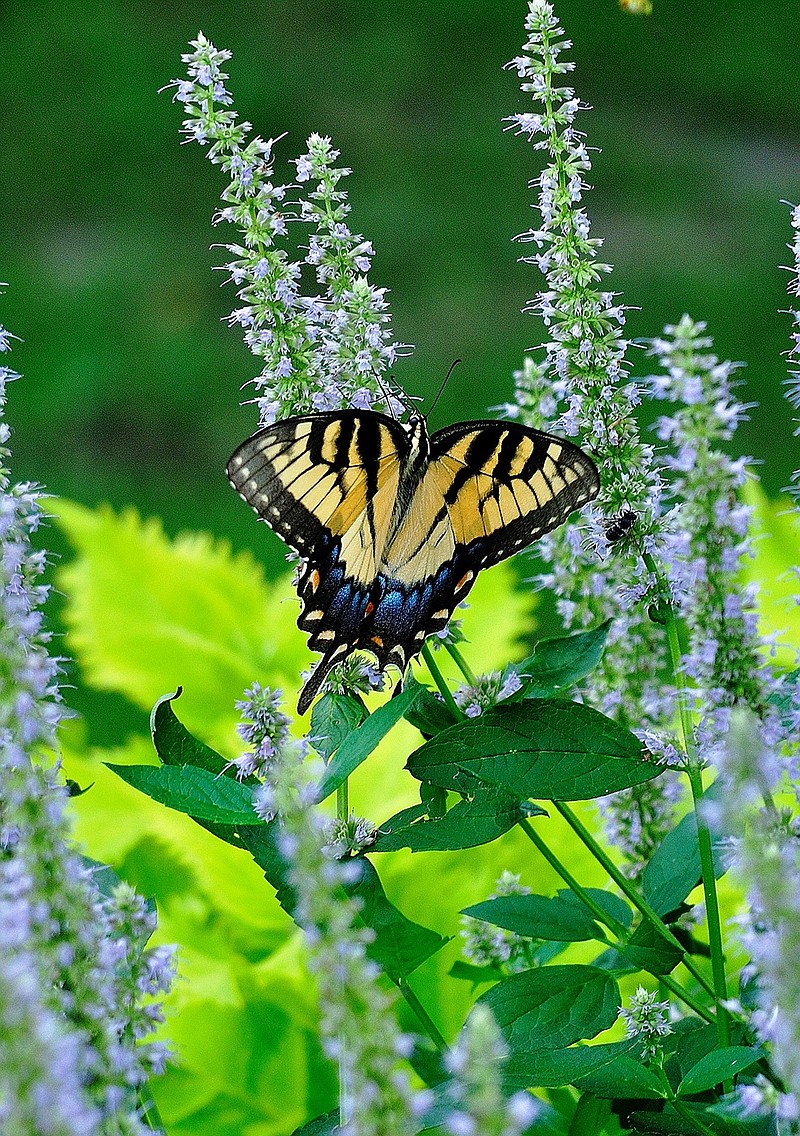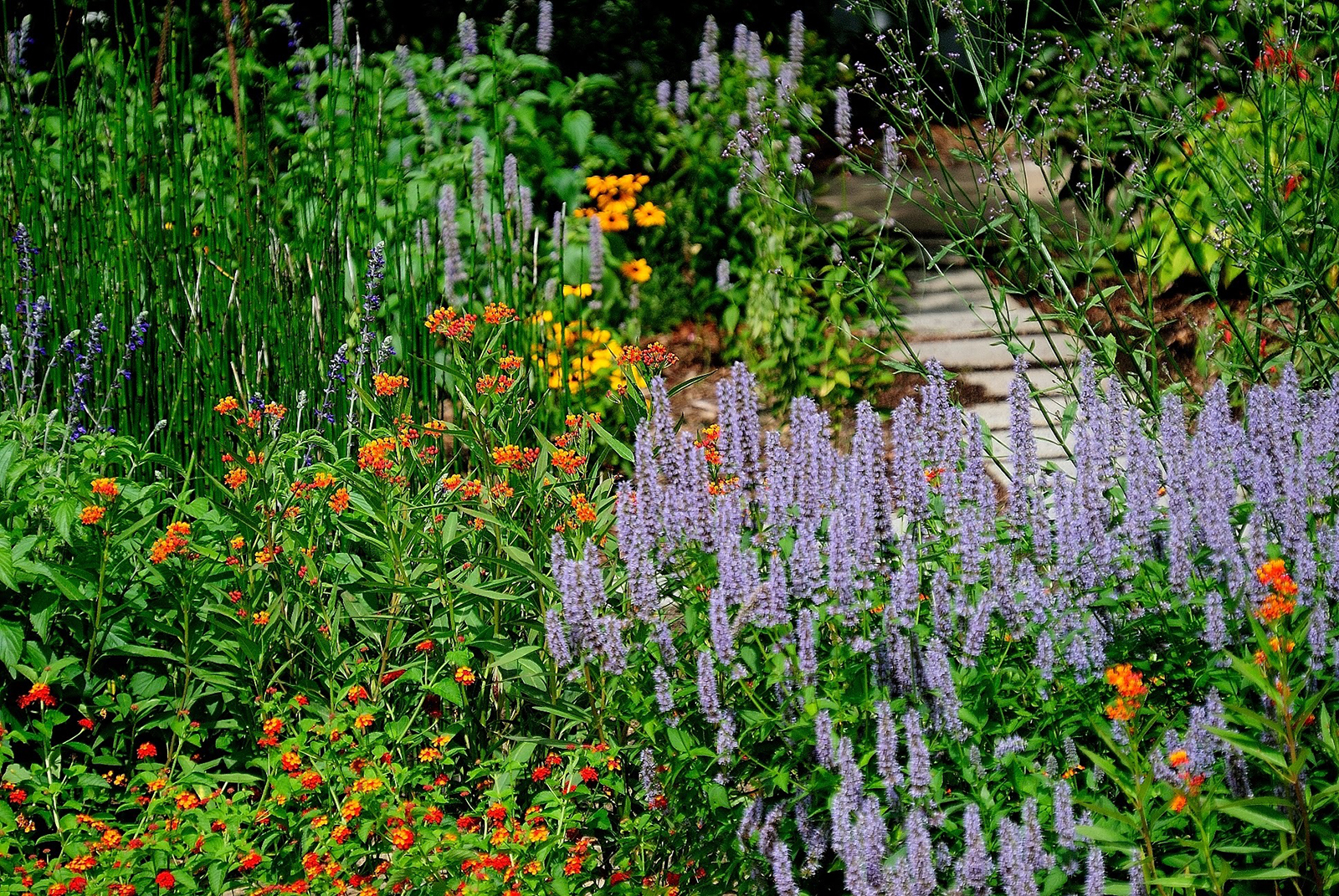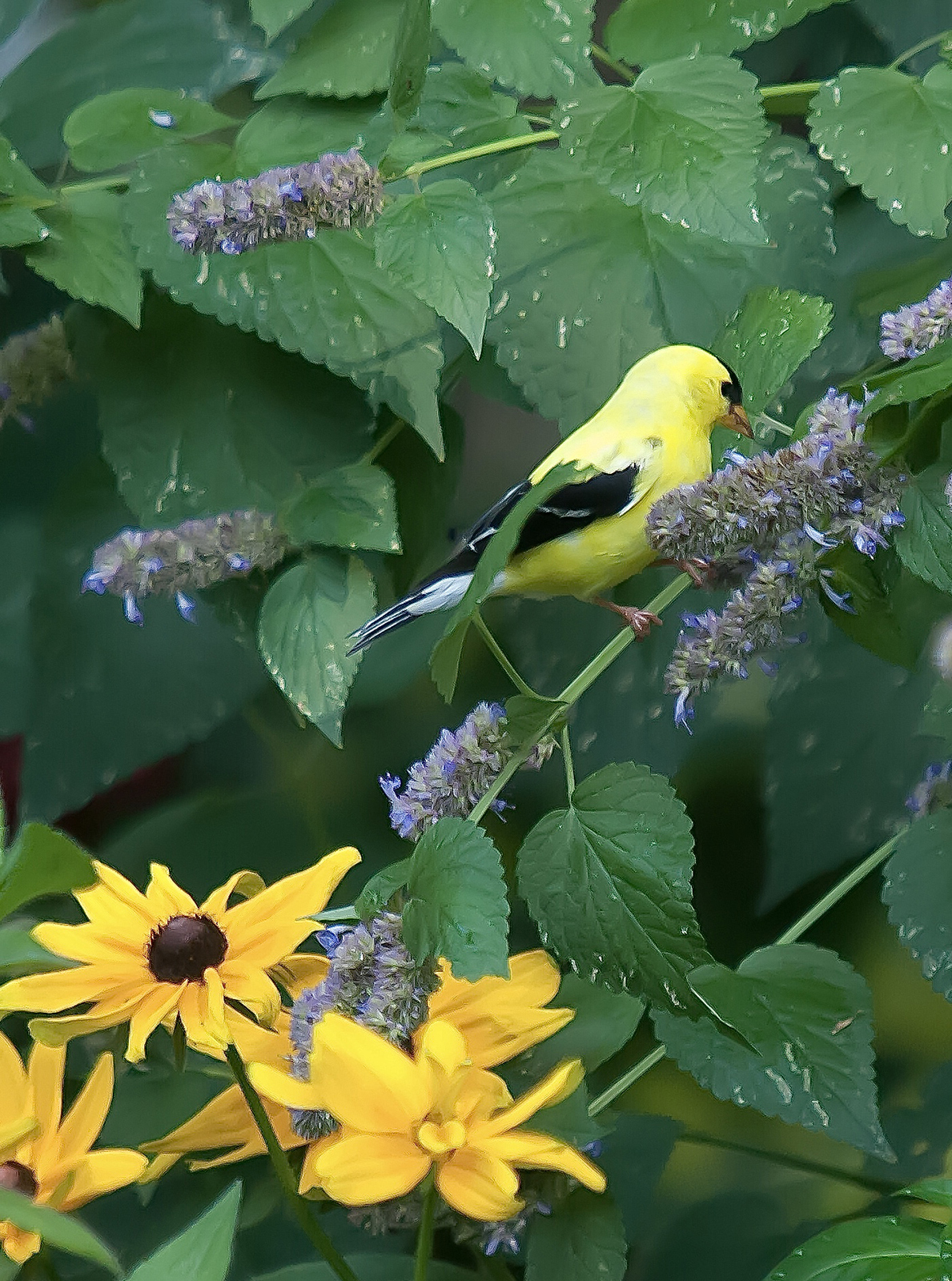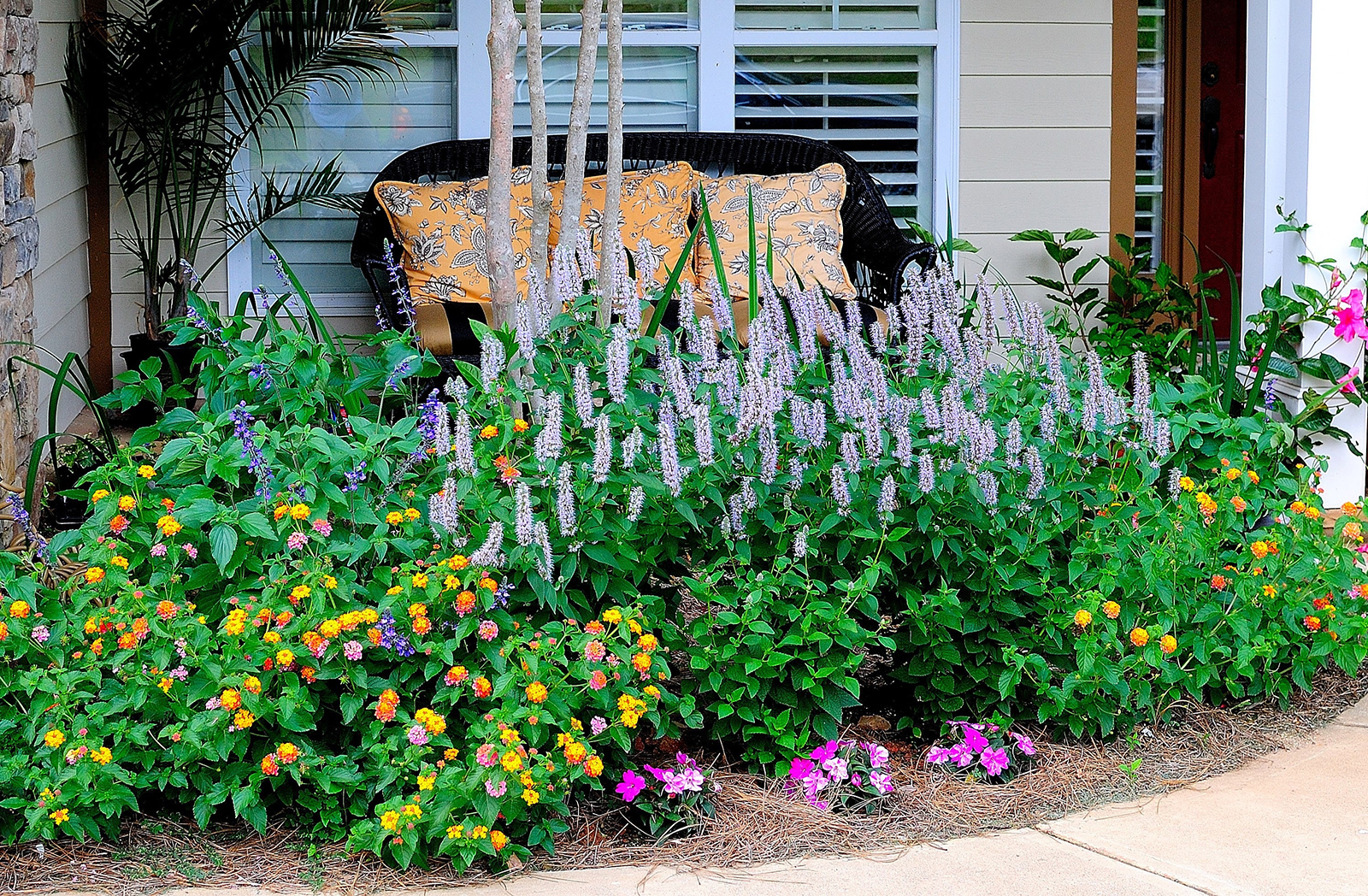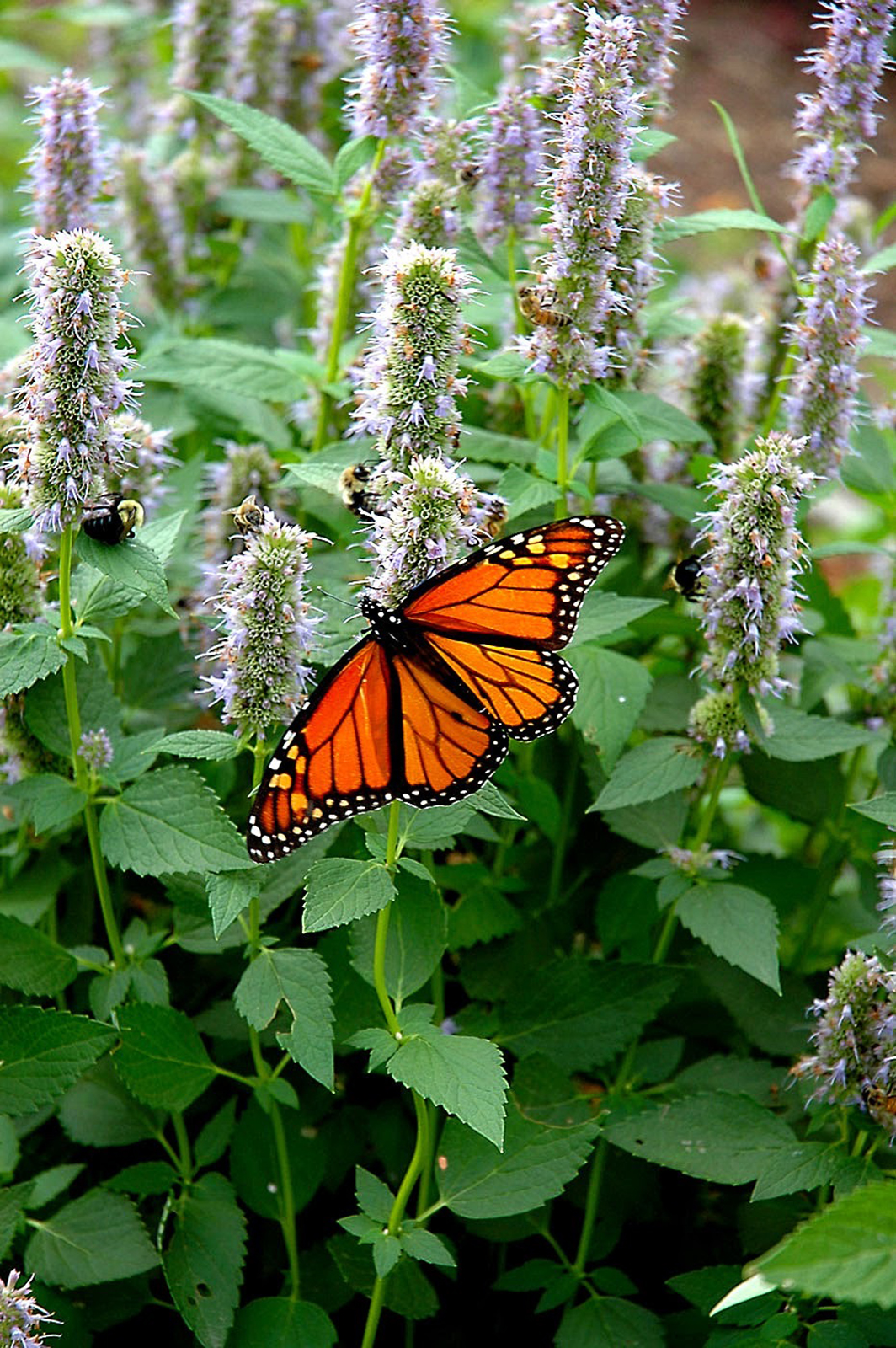A feeling of euphoria came over The Garden Guy and I muttered to myself that my work on earth was done. OK, I am kidding to a point.
I am trialing two new agastaches, which I admit I am falling in love with: Meant to Bee Queen Nectarine and Meant to Bee Royal Raspberry. I'll write about them in the coming months. My moment with a visit down Euphoria Lane however came when I went to Proven Winners agastache page and saw almost a dozen selections including the one that I consider the grandaddy, the foundation of all pollinator gardens worth their salt. And that is Blue Fortune.
My first trial with Blue Fortune was more than 15 years ago when I was an extension horticulture specialist with Mississippi State University. Since then it has been featured in all of my pollinator or butterfly presentations and I have written about it several times. But to be honest, it has been like I was speaking in some kind of paranormal vacuum. Oh, you would get to buy one or two ever so often. Pollinator geeks like myself kind of have an inner circle; if you see an agastache for sale, send an alert or pick some up for me, just in case I never get the chance again.
Now with the No. 1 plant brand obviously putting some extra effort toward bees, birds and butterflies with the addition of almost a dozen agastache varieties, the future is bright. Regarding Blue Fortune, now we will all hopefully have the opportunity to buy some. No longer will it be like searching for the proverbial four-leaf clover. Our secret agastache groups can dissolve.
I know there is probably a large group, a new generation of readers, if you will, who are asking what in the world is a Blue Fortune agastache and why would I want one? First know that it is a perennial, cold hardy from zones 5 through 9. The rest of you can grow it as an annual. In addition to the name agastache, they also go by names like anise hyssop and hummingbird mints.
Blue Fortune has native DNA, Agastache foeniculum, that was crossed with one of the best outsiders from Korea, Agastache rugosa. The result is a supercharged perennial that will yield glorious lavender blue spikes of blooms all season until it is time for winter rest. During this long period of bloom, it will bring in all sorts of bees, butterflies, and hummingbirds. Then to add to your deadheading quandary, consider that birds like American goldfinches may come to eat the seeds. They are at my house. It is a one-stop habitat café with a treasure trove of food, none of which is on Bambi's menu.
As far as landscape aesthetics are concerned, the 2-foot-tall clump of blue fragrant flower spikes create excitement in the garden with their texture. You may actually think there is sound associated with the flowers as it will be the hum of bees. The blue color partners well with all other colors of agastaches, and other prized pollinator plants like Truffula Pink gomphrena, Rockin salvias and Luscious lantanas.
The Garden Guy does well with Blue Fortune even though I am a little sun challenged. In full blazing sun, the blooms and performance are even better. Good drainage is essential for a spring return as wet winter boggy soil will give you problems.
Those of you who are culinary specialists will love the opportunities of using Blue Fortune agastache or anise hyssop in the kitchen. Honey producers consider anise hyssop honey to be among the finest. Pollinator lovers, our future looks bright, with a mega brand taking agastache to a new level.
(Norman Winter, horticulturist, garden speaker and author of "Tough-as-Nails Flowers for the South" and "Captivating Combinations: Color and Style in the Garden." Follow him on Facebook @NormanWinterTheGardenGuy.)

